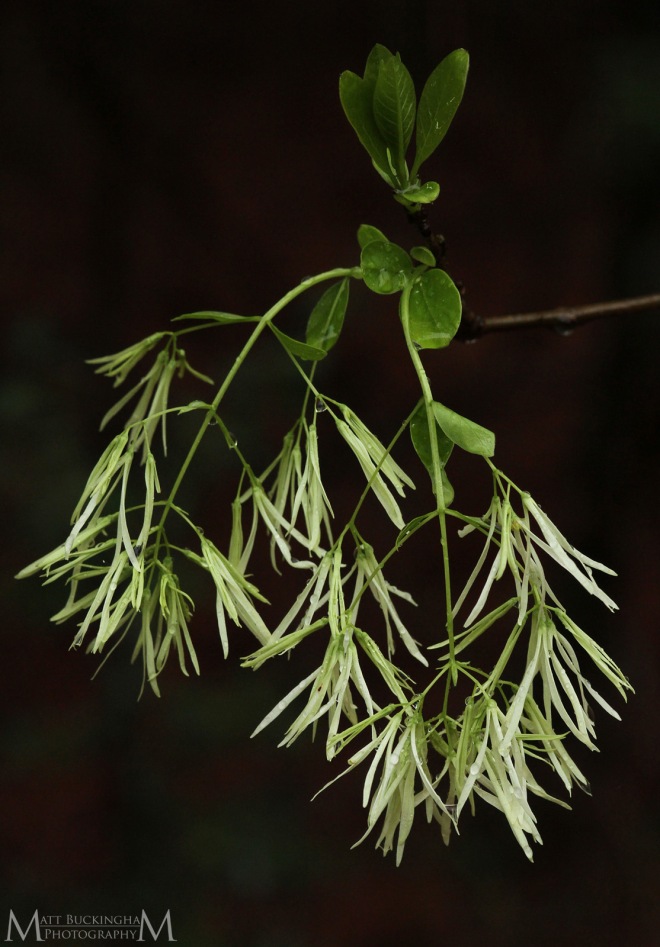Due to a combination of changed plans and other factors, March was not as productive in terms of 2017 biodiversity goal species as I was expecting. I was able to check off three species:
Yellowroot (Xanthorhiza simplicissima)
Blue Curls (Phacelia congesta)
Claret Cup Cactus (Echinocereus coccineus)

I spent most of the month of March exploring outside my home turf of the Pineywoods. From the South Texas Plains to the Edward’s Plateau, I observed an incredible diversity of habitats and species, which are highlighted in previous blog posts. I did however get to spend some time in the field around here. To follow are some of March’s highlights from East Texas.
This year has been good for Luna Moths (Actias luna). I observed several freshly emerged males. Males utilize their feathery antennae to pick up subtle pheromone cues from females and may fly miles to find a mate. Adult Luna Moths lack feeding mouth parts, and live on average about a week. As adults they really are driven by a singular purpose: to breed.

Luna Moth
March is a great time to enjoy flowering trees and shrubs in East Texas. This year most species put on a decent show. The Eastern Redbud (Cercis canadensis) seemed to peak in late February, however several were still in flower in early March.

Eastern Redbud
Among my favorite spring displays is that of the Flowering Dogwood (Cornus florida). This small tree ranges throughout much of the eastern United States. To me it is one of the emblematic spring blooms of East Texas. Christian accounts claim that Jesus was crucified on the wood of a dogwood tree. Story goes that they were once tall, stately trees that Jesus, following his crucifixion, morphed to their current gnarled form – presumably so no others could ever again be crucified upon their wood. Their “flowers” now appear as crosses each spring around Easter.
In reality the white “flowers” are modified leaves called bracts. The flowers are the yellow structures at the bracts’ centers. In the late summer the tree will bear red fruits that are cherished by wild turkeys. I also think that their growth form only lends beauty to this already stunning species.

Flowering Dogwood

Flowering Dogwood

Flowering Dogwood in the understory of a longleaf pine savannah
The Fringetrees (Chionanthus virginicus) seem to hit their peak as the dogwoods are beginning to fade. Their wispy, whitish green blooms light up the forest edge and the understory in open woods.

Fringetree
Dangling like little snowdrops are the blooms of the Two-winged Silverbell (Halesia diptera). These attractive little trees are often found along streams and in moist stream bottoms.

Two-winged Silverbell

Two-winged Silverbell
Azaleas are a favorite of gardeners and nature lovers alike. In East Texas the Hoary Azalea (Rhododendron canescens) reaches the southwestern extent of its range.

Hoary Azalea

Hoary Azalea
I couldn’t resist photographing a particularly large Sabine River Wakerobin (Trillium gracile). This lovely trillium is endemic to rich forests in the Pineywoods of East Texas and western Louisiana.

Sabine River Wakerobin
Another springtime favorite of mine is the Mayapple (Podophyllum peltatum). This characteristic spring ephemeral of eastern forests can form large colonies in East Texas, often carpeting the forest floor. The fluffy white blooms hang below the large umbrella like leaves. Occasionally, as pictured below, the flowers may have a pink tinge to them.

Mayapple
Though I photographed a few in February, I couldn’t resist stopping to photograph some roadside populations of Birdfoot Violets (Viola pedata) in early March.

Birdfoot Violets

Birdfoot Violet
Also common along roadways and dry, open woods is the Plains Wild Indigo (Baptisia bracteata).

Plains Wild Indigo
I photographed this Yellow Star-Grass (Hypoxis hirsuta) with fresh morning dew still clinging to the bloom.

Yellow Star-Grass
Another characteristically eastern forb that reaches its southwestern extent in East Texas is the Lousewort (Pedicularis canadensis). Most of the flowers in Texas are yellow, however I have occasionally observed them with hints of maroon. Lousewort is reported to provide a plethora of medical uses. It’s roots have long been used to brew a tea that helps treat digestive and stomach problems and ulcers. Its leaves can also reportedly be ground into a poultice that helps alleviate swelling, muscle pain, and several skin conditions. Drinking its leaves in a tea is said to sooth sore throats, coughs, and headaches. It is also said to act as a powerful aphrodisiac.

Lousewort

Lousewort
The beautiful Big Thicket Phlox (Phlox pulcherrima) is endemic to the forests of East Texas. Like so many other species in this area of significant habitat modification by man, it is now most common along roadsides.

Big Thicket Phlox
The Nodding Penstemon (Penstemon laxiflorus) is also common along roadsides. It is so common that I never gave it much thought as a photographic subject, however this native has truly unique, beautiful flowers when viewed up close.

Nodding Penstemon
During March I also made a few visits to the Big Thicket to check on a species that I checked off my list in February: The Federally Endangered Texas Trailing Phlox (Phlox nivalis ssp. texensis). The plants were looking healthy and were still blooming mid-March.

Texas Trailing Phlox

Texas Trailing Phlox
Growing near the phlox I saw several Dollarleafs (Rhynchosia reniformis), a species of the coastal plain of the southeastern United States.

I’ll close out this March recap with a beautiful scene from a longleaf pine savannah near one of the few known locations of Texas Trailing Phlox. Here Rose Mock Vervain (Glandularia canadensis) thrives following a fire. These showy blooms are a testament to fire’s ability to maintain and vitalize certain vegetative communities.

With March of 2017 behind us, it’s time to move into April, where I hope to really start get going on my 2017 list of biodiversity goals.








